Research Updates
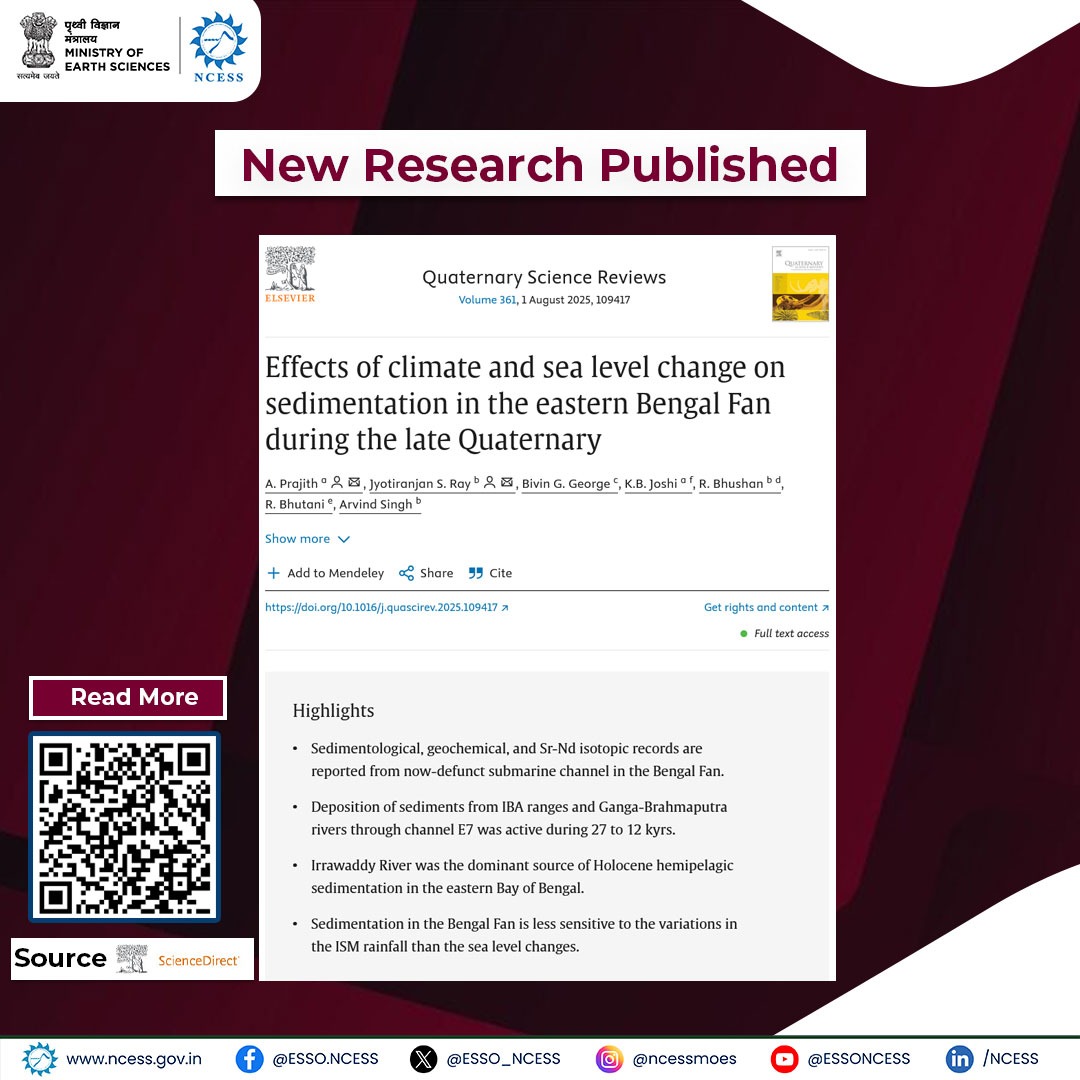
A fascinating new study from the National Centre for Earth Science Studies (NCESS) is shedding light on the forces at play in the development of the Bengal Fan. The research reveals that the sedimentation processes in the Bay of Bengal are surprisingly resilient to shifts in Indian Summer Monsoon rainfall. Instead, it's the changes in sea level that have a more pronounced effect. This discovery highlights the complex interplay between climate and coastal geomorphology, showcasing how these environmental factors intricately shape the evolution of the Bengal Fan.
Bibliographic Info: A. Prajith, Jyotiranjan S. Ray, Bivin G. George, K.B. Joshi, R. Bhushan, R. Bhutani, Arvind Singh (2025).
https://doi.org/10.1016/j.quascirev.2025.109417.
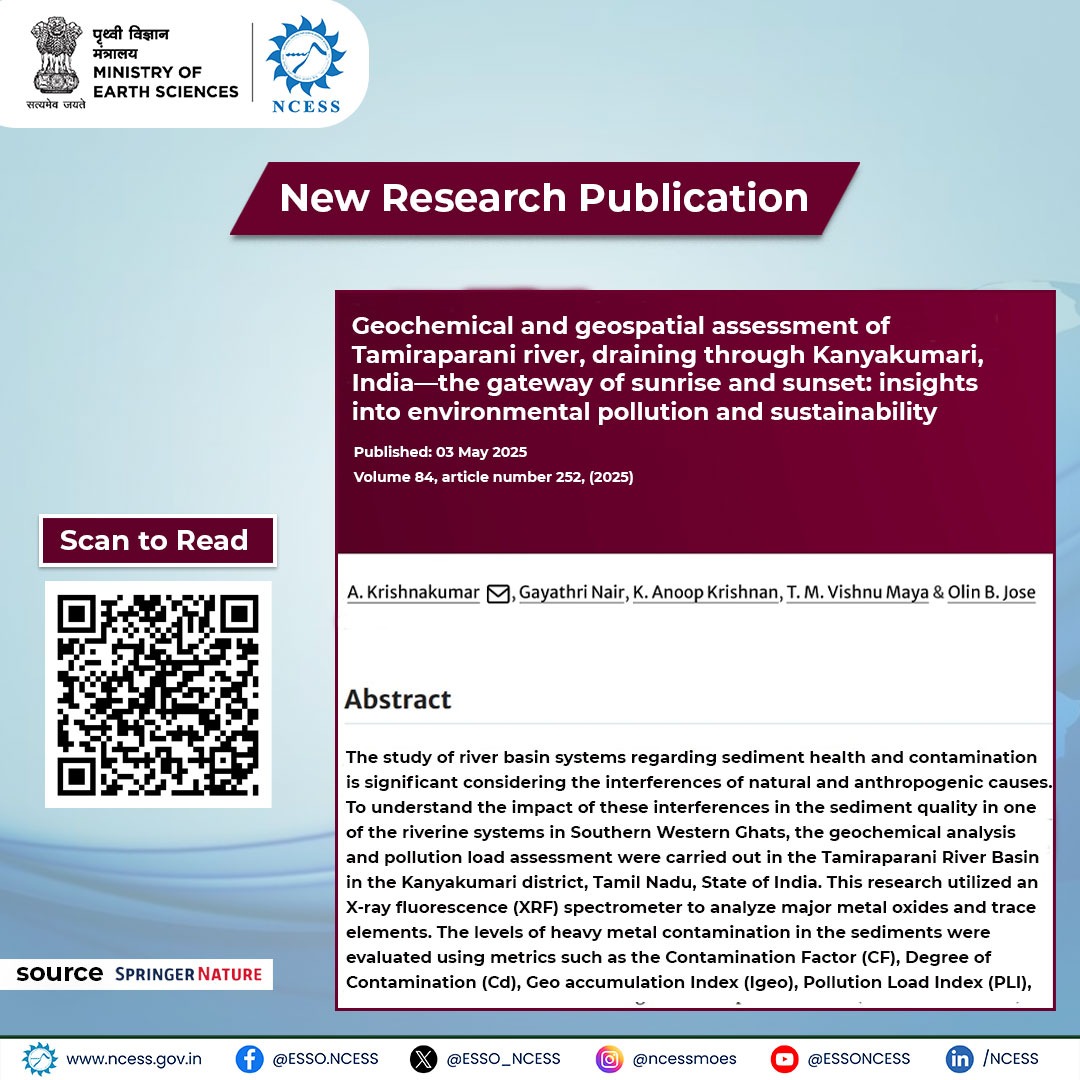
A captivating new study from the National Centre for Earth Science Studies (NCESS) dives into the sediment characteristics and trace metal pollution of the Tamiraparani River. This research draws a clear line between natural and human-induced pollution, uncovering noteworthy contamination levels of metals such as copper, chromium, and zinc that fluctuate depending on the area.
Bibliographic Info: A. Krishnakumar, Gayathri Nair, K. Anoop Krishnan, T. M. Vishnu Maya & Olin B. Jose (2025).
https://doi.org/10.1007/s12665-025-12265-6.
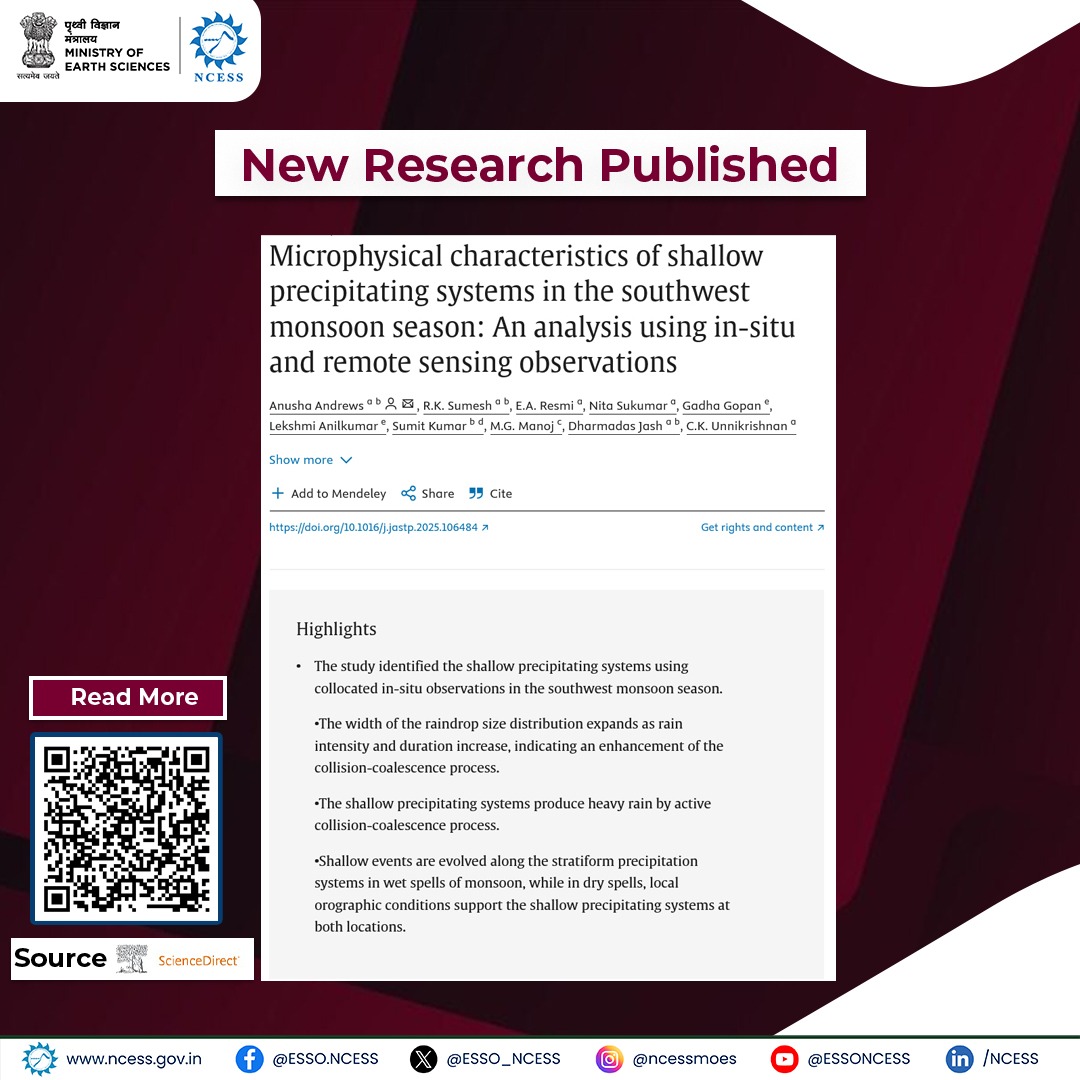
A new research by the National Centre for Earth Science Studies (NCESS) identified the shallow precipitating systems using collocated in-situ observations during the southwest monsoon season. The shallow precipitating systems produce heavy rain by the active collision-coalescence process. The collision-coalescence process is enhanced with the rain intensity and duration of shallow systems, as evidenced by the widening of the raindrop spectra.
Bibliographic Info: Anusha Andrews, R.K. Sumesh, E.A. Resmi , Nita Sukumar , Gadha Gopan , Lekshmi Anilkumar , Sumit Kumar , M.G. Manoj , Dharmadas Jash, C.K. Unnikrishnan . (2025).
https://doi.org/10.1016/j.jastp.2025.106484..
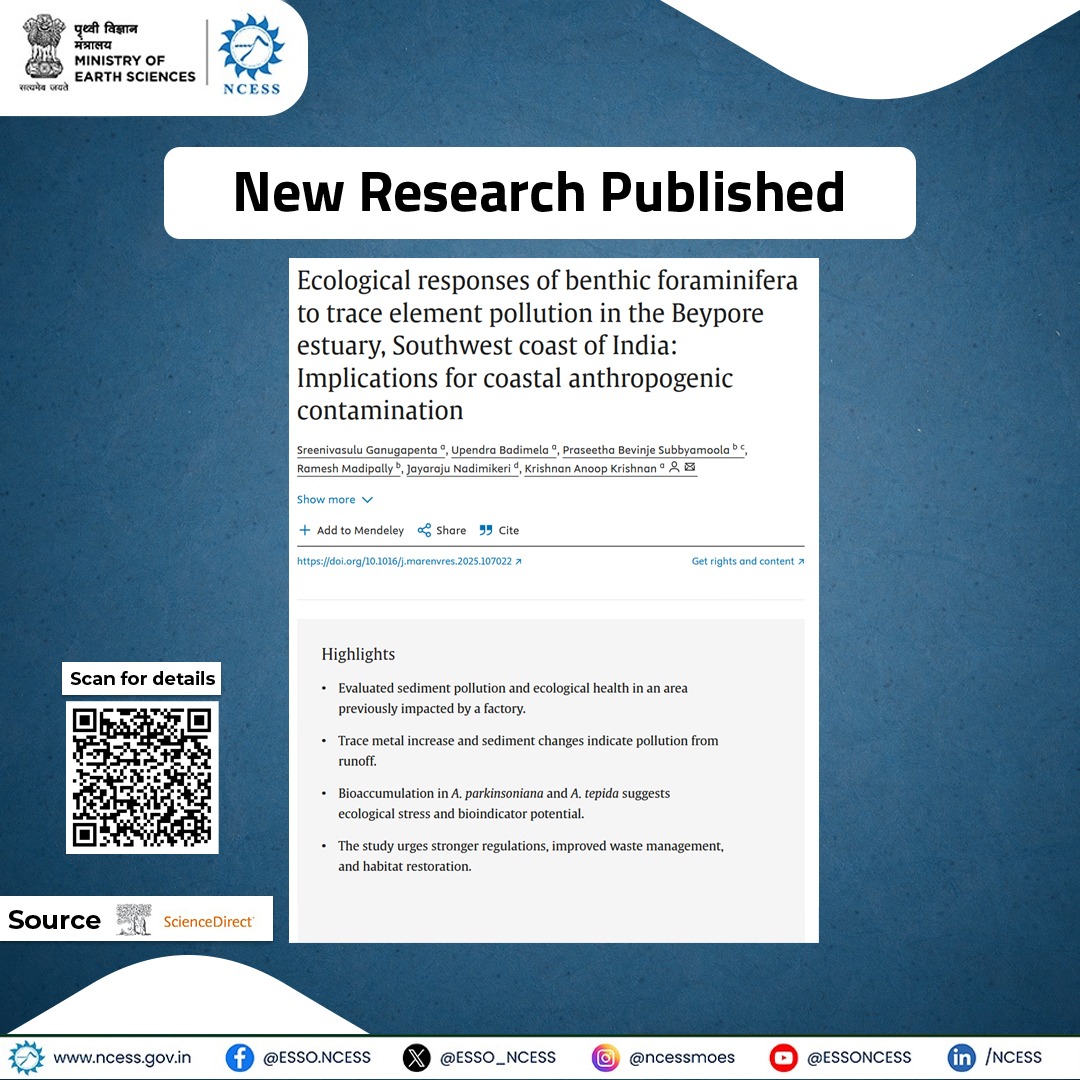
A new research by the National Centre for Earth Science Studies (NCESS) provides a comprehensive assessment of sediment characteristics, trace metal pollution, and the ecological health of the Beypore Estuary over nearly three decades (1989–2015). The findings emphasize the role of benthic foraminifera as bioindicators, offering crucial insights into coastal anthropogenic contamination.
Bibliographic Info: Sreenivasulu Ganugapenta,Upendra Badimela,Praseetha Bevinje Subbyamoola,Ramesh Madipally,Jayaraju Nadimikeri, Krishnan Anoop Krishnan . (2025).
https://doi.org/10.1016/j.quascirev.2025.109417.
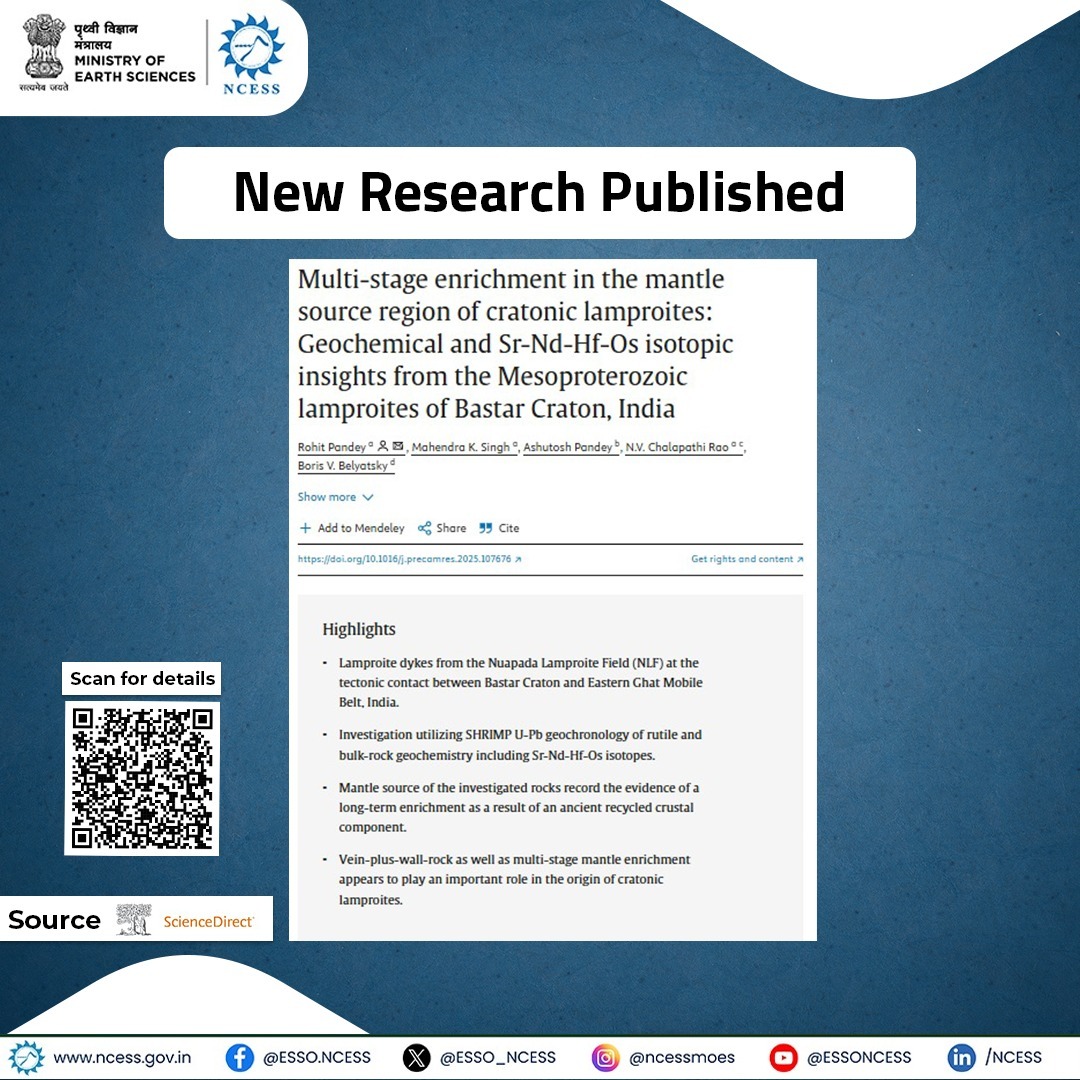
A new research by the National Centre for Earth Science Studies (NCESS) on ‘Multi-stage enrichment in the mantle source region of cratonic lamproites: Geochemical and Sr-Nd-Hf-Os isotopic insights from the Mesoproterozoic lamproites of Bastar Craton, India’, presents SHRIMP U-Pb geochronology of rutile and bulk-rock geochemistry.
Bibliographic Info: Rohit Pandey, Mahendra K. Singh, Ashutosh Pandey, N.V. Chalapathi Rao, Boris V. Belyatsky. (2025).
https://www.sciencedirect.com/science/article/pii/S0301926825000026.....


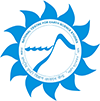

 RTI Act
RTI Act

